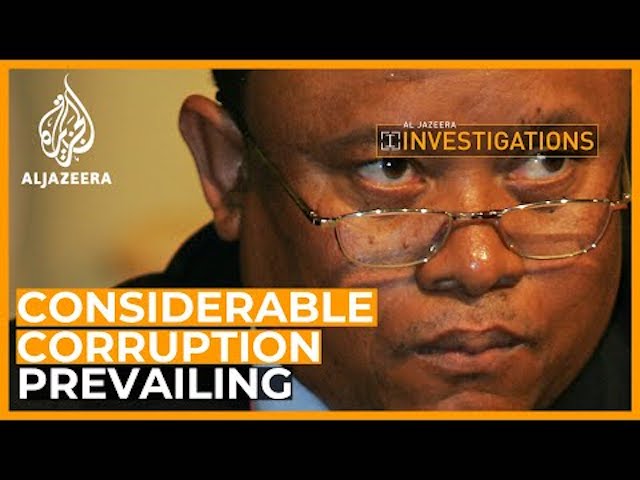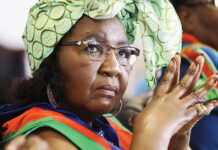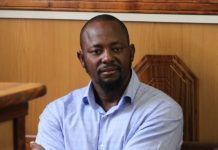By Shinovene Immanuel | 16 December 2019
AL JAZEERA’S Investigative Unit was the talk of the country before Namibia’s elections last month.
At the heart of the discussion was its documentary ‘Anatomy of a Bribe’, which investigated the high scale of corruption in Namibia’s fishing industry.
Al Jazeera compiled the documentary, using a sting operation to show how easy it was for foreign nationals to acquire fishing licences by working closely with ministers, lawyers and business people with the power to influence political decisions.
The documentary had clocked up to 728 200 views on YouTube by yesterday since its launch two weeks ago. The Investigative Unit will soon release an Oshiwambo language version of the documentary.
The Namibian’s Shinovene Immanuel asked reporter James Kleinfeld from Al Jazeera’s Investigative Unit how they investigated this story.
The Namibian (TN): How did Al Jazeera’s Investigative Unit join this fishing investigation?
James Kleinfeld (JK): The story begins with Johannes Stefansson first reaching out to Wikileaks with his body of evidence. Wikileaks then approached Al Jazeera’s Investigative Unit to work on this story as a media partner, alongside Icelandic media.
TN: How many journalists worked on the story?
JK: The core team consisted of the producer, myself, the reporter Simon Boazman and the producer-director Seamus Mirodan. This project would not have succeeded without the tireless efforts of a revolving cast of colleagues – journalists, undercover reporters, cameramen and editors, staff members from our London, Washington DC and Doha bureaus, as well as freelancers, nearly a dozen in total who travelled to Namibia, Iceland, Japan, South Africa, Germany, France, Norway and Morocco to work on this project.
TN: What was your first reaction when you saw the documents on the Fishrot files?
JK: Our initial reaction was one of excitement at the strength of the evidence presented. What the documents show in no uncertain terms is how Samherji knowingly conspired with politically-exposed persons in the entourage of former minister Bernhard Esau to corruptly gain access to Namibia’s fishing resources. The challenge we faced was how to take this evidence further. In order to make a compelling film, there was no better choice than to go undercover, and to obtain video evidence of the allegedly corrupt officials at work.
TN: What efforts did your team make to ensure that the investigation will stand any challenge?
JK: In the end, we had two bodies of evidence to work with: the “historic” story of Johannes Stefansson’s time in Samherji until 2016, and the “contemporary” story of our undercover reporters in 2019. One important editorial decision, for both cinematic and evidentiary reasons, was to edit these two narratives together, jumping back and forward in time. We set out to prove that it would be possible to recreate the steps taken by Samherji in Namibia – and as can be seen in the final ‘Anatomy of a Bribe’ film, each narrative tends to reinforce the other one. This is how Samherji did it, and this is how Jonny [undercover reporter] did it. Confronted with both the documents and the undercover footage, it all adds up to a very compelling case.
TN: What were the challenges of working on a story like this?
JK: Not being based in Namibia while trying to run a successful undercover operation that can throw up some interesting logistical challenges. Flights from London to Windhoek can take at least 13 hours, and flights from Washington DC can be at least 20 hours long. For every trip planned to Windhoek, our continuing work on this project depended on the successful undercover operation.
When you are trying to negotiate a multimillion-dollar fishing deal on behalf of fictitious investors, any number of things can go wrong – it is no doubt testament to Jonny’s skill as a reporter, and the tremendous logistical support we were able to provide, that led to the successful execution of the mission.
TN: One of the decisions Al Jazeera’s Investigative Unit made was to have a publishing partner in Namibia. Why did you choose The Namibian for this partnership?
JK: While this specific project can be traced back to the courageous decision by Johannes Stefansson to go public to Wikileaks, it is also true to say that The Namibian has been with this story from the beginning, reporting on irregularities in the fishing industry, and the activities of Sisa Namandje and Sacky Kadhila-Amoomo. For this reason, we recognised that The Namibian newspaper was the natural local partners for such an important story.
TN: Why did you specifically target Sisa Namandje, Sacky Kadhila-Amoomo and Bernhard Esau?
JK: The choice to approach Sisa Namandje as a legal consultant in the country was informed by the documents we obtained over the course of the investigation, showing Namandje had received N$17,5 million from the state-owned fishing company Fishcor. It was also informed by reporting in The Namibian which showed Namandje’s key role in representing foreign investors in deals in Namibia. It was then Sisa Namandje who suggested we enter into negotiations with Sacky Kadhila-Amoomo, with whom he owns a property in northern Namibia.
TN: Al Jazeera opted to broadcast the documentary a few days after the elections. What prompted this decision?
JK: What needs to be understood is that, as investigative journalists, we do not operate on the same deadline pressures as regular news journalists. As such, we never publish our findings until we are certain that our reporting stands on firm ground.
As we were working on the investigation, it quickly became apparent that this would be an investigation of extraordinary importance to the Namibian people, implicating key members of the country’s ruling elite. It was of paramount importance to ensure that our documentary reached the highest standards of journalistic integrity. Instead of rushing to release the documentary before the election, we carefully deliberated on the journalism – as indeed we always do – until we felt we were ready to broadcast.
TN: Did you predict the impact of the story?
JK: It is always difficult to accurately predict the reactions to any story, which is why I generally refrain from making such predictions. A cursory look at reporting from The Namibian newspaper shows how this was indeed not the first time that Esau and Shanghala were at the centre of allegations of corruption, and yet a unique set of circumstances seem to have aligned, which has led to the arrests and prosecution of the so-called “Fishrot 6”.
Our role as journalists is simply to present the public with truthful information which is in the public interest. Any further action is up to the relevant authorities to take.
TN: What is your comment on the public reaction to this story in Namibia?
JK: While I was in Namibia working on the undercover operation, I would speak to Namibians about the problems which your country faces. Many people recognised the issues of corruption. And yet, I was often told by Namibians that there was not a strong appetite for reform, and that people would never dare to make their voices heard in improving the country. What has transpired since the findings were released, on the contrary, shows the fighting spirit of the Namibian people.
It has been heartening to see thousands of people in Windhoek, at Walvis Bay and elsewhere stand up for their rights, and fight for the proceeds of the country’s wealth to be distributed equitably. One can only hope that this energy amongst the population leads to decisive action taken, reforming not just the fishing sector, but also other sectors plagued by corruption and mismanagement.
TN: Do you have any plans to continue covering stories in Namibia?
JK: We will always be in the business of exposing the wrongdoing of the powerful and the privileged, all around the world. We fully intend on reporting on the developments which the Fishrot story continues to take. In the meanwhile, I am happy to announce that we are currently working hard on producing a version of ‘Anatomy of a Bribe’ dubbed in Oshiwambo, ‘Olutu Lwoombumbo’. We will announce the release date on our Twitter account, @AJIunit.
TN: How can Namibian whistle-blowers contact your team?
JK: Anyone can message us over Twitter, or contact us via our secure tips page. https://www.aljazeera.com/tips/
The safest way to communicate digitally is with the application Signal, which is available on all smartphones.






